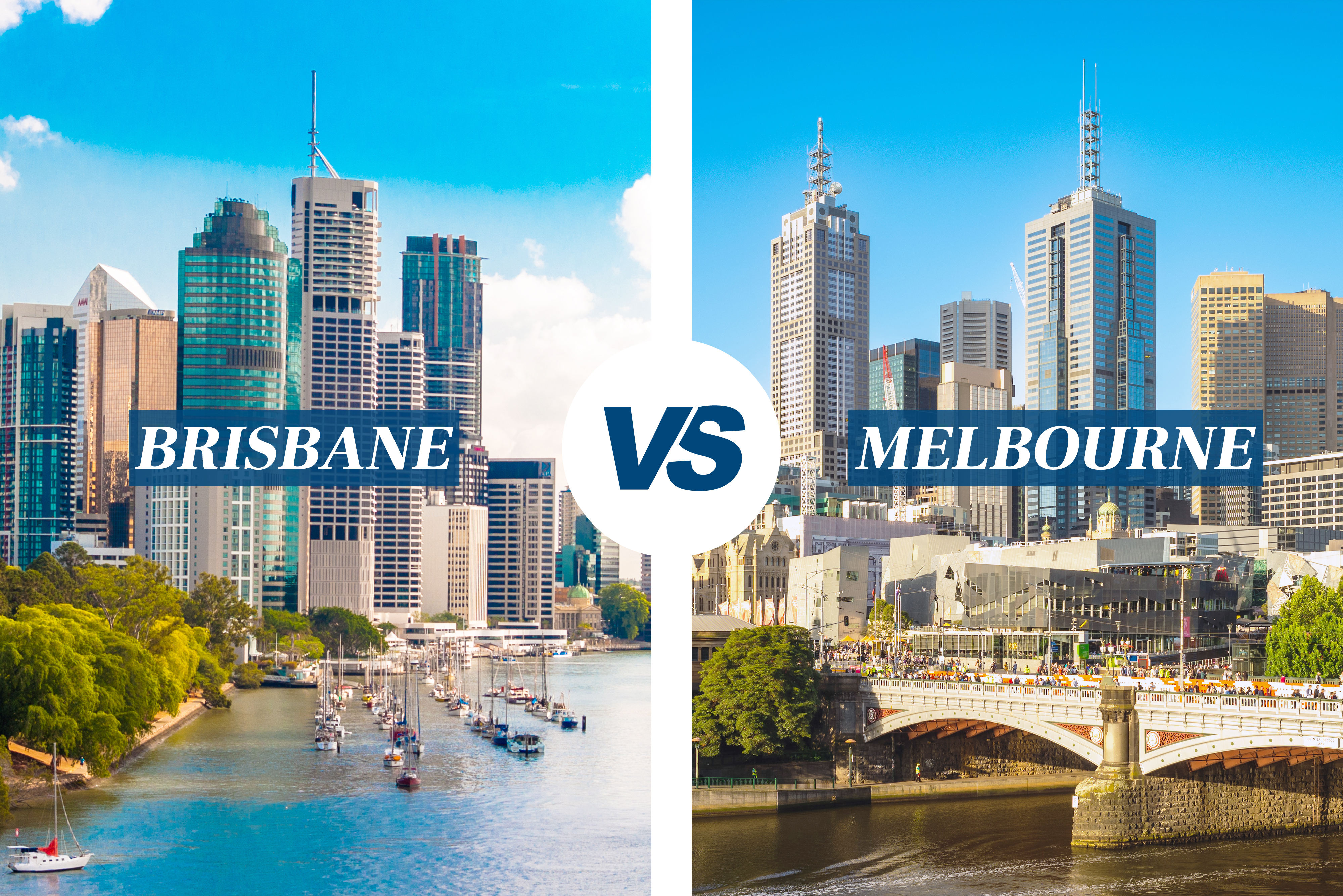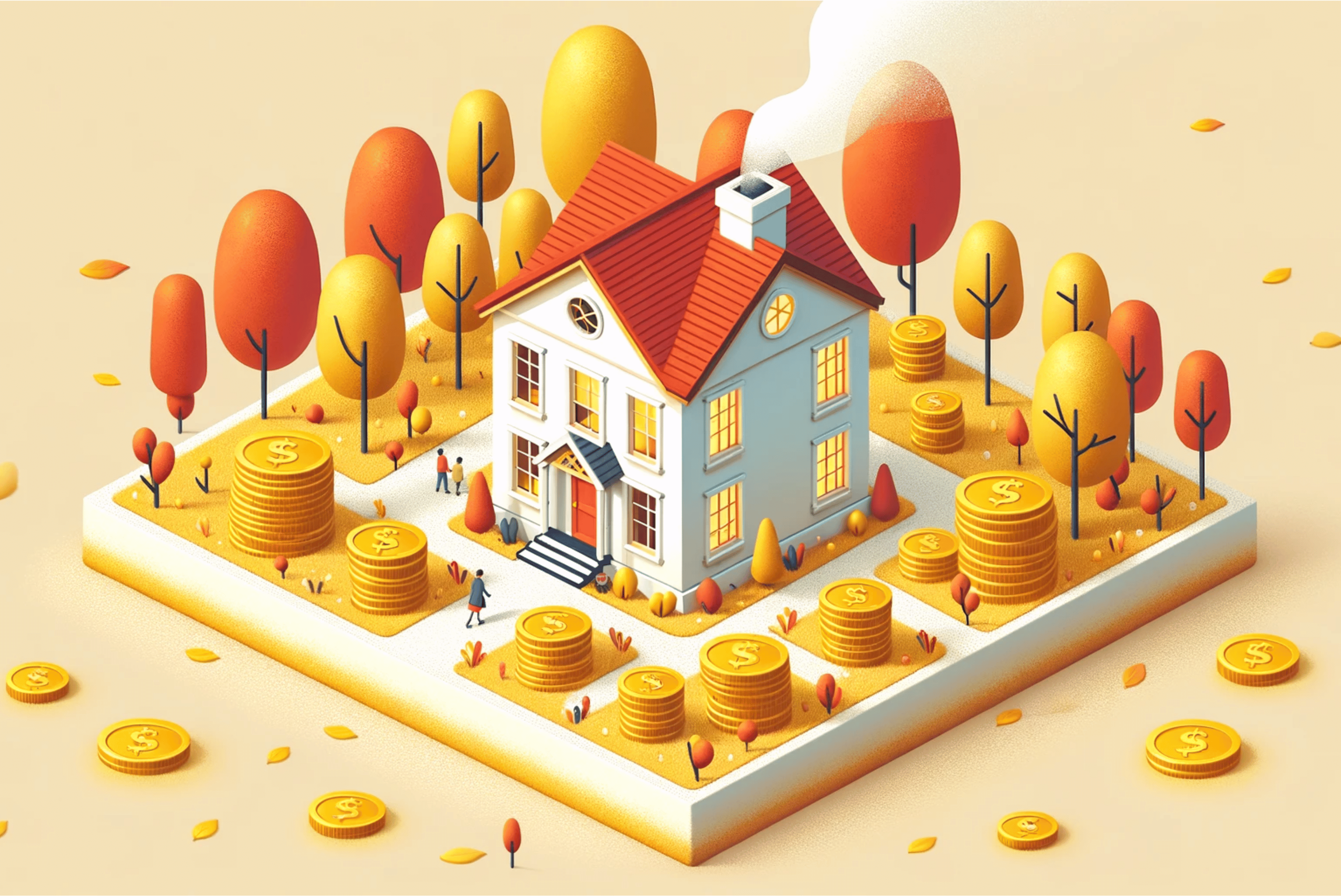Features > Property Education > Investment Tips
Brisbane vs Melbourne property prices - Behind the headlines

KEY POINTS
- CoreLogic figures show Brisbane has overtaken Melbourne as Australia’s third most expensive dwelling market
- Since the onset of COVID-19, Brisbane’s home price growth has outpaced Melbourne’s by nearly 5 times
- However, buyer’s agents and real estate agents are optimistic about Melbourne houses and apartments offering good value at a time of growing demand, particularly from strong migration to the Victorian capital
- Experts say a tight Brisbane housing market also poses opportunities for property investors
You may have seen headlines lately about home prices in Brisbane overtaking Melbourne, making the Queensland capital the third most expensive city in Australia behind Sydney and Canberra.
“Experts say it shows a desire by many Australians to escape recent COVID-19 pandemic lockdowns and seek a slower-paced lifestyle in the rapidly changing sunshine capital,” declared the AAP news service.
But when you dig into the actual numbers, what you see is a story about a housing shortage in a city bursting at its seams (Brisbane) and an undervalued city that’s about to enter a rapid growth phase in its property cycle (Melbourne).
Ironically, this makes both cities ideal targets for savvy property investors.
The nitty-gritty

According to CoreLogic’s Home Value Index, Brisbane ended 2023 with a median home price of $787,217, just under $7,000 more than Melbourne’s at $780,457.
It’s the first time Brisbane’s median home price has eclipsed Melbourne since July 2009.
“Brisbane homes have seen extraordinary capital growth in the past few years, rising 50.2% since the onset of the pandemic in March 2020,” says CoreLogic’s Head of Research, Eliza Owen.
“Over the same period Melbourne values rose just 11.0%, which was the weakest increase of any capital city market.”
The first thing to remember is that these figures are just city-wide estimates based on anticipated sale price algorithms, not a story of growth in individual suburbs.
Then there’s the composition of the numbers.
According to CoreLogic, “Despite recording a higher median dwelling value, Brisbane’s median house and unit values are still -$72,000 and -$49,000 below Melbourne’s medians respectively.”
“The reason for this is that Melbourne has a higher share of units as a portion of the dwelling market.”
CoreLogic estimates that units make up just under 34% of Melbourne dwellings, compared to just under 26% of homes across Brisbane.
Because units are generally cheaper than houses, a higher portion of units brings down the median dwelling across all dwellings.
So, in bald terms, the median house or unit is still going to be more expensive to purchase in Melbourne than it is in Brisbane.
Population pressure
CoreLogic’s Eliza Owen says the Brisbane property boom can be partly explained by population data.
“The normalisation of remote work for many professionals made interstate migration to Queensland more feasible, while Melbourne’s extended lockdowns from March 2020 through to October 2021 may have prompted people to leave the city,” she says.

“This is reflected in ABS migration data, which shows net interstate migration to Queensland hit a record high of 51,500 in the year to March 2022.”
“In the same period, net interstate migration to Victoria was -20,000.”
“Value falls across Melbourne were also exacerbated by the loss of overseas migration through COVID, but net overseas migration turned positive in 2022,” Ms Owen says.
Over the medium term, however, Eliza Owen is upbeat about Melbourne.
“I think that the population gains we will see in the coming years from overseas migration will help to boost the market, alongside easing lending conditions once interest rates come down.”
Melbourne is set to surpass Sydney as Australia’s largest city by 2031 when it will have a population of around 6 million, and according to the Victorian government, it’s estimated the city will be home to 10.3 million people by 2051.
This is largely because Melbourne attracts about 30% of new migrants to Australia, in particular migrants from India.
Investors take note
Arjun Paliwal is the head of research at buyer’s agency InvestorKit.
“When it comes to opportunistic buying, I think Melbourne could deliver one of the strongest capital gains in the medium to long term because house price growth has been subdued for the past seven years, and demand is likely to rise due to international migration,” he told the Financial Review.
As for units; for years, inner city Melbourne suffered from an oversupply of apartments.
That’s now completely reversed.
“Inner Melbourne has limited supply,” Andrew McCann, the Managing Director of Jellis Craig Real Estate, told Australian Property Investor Magazine.
“The exodus of people who left Melbourne seeking lifestyle and other Covid-related moves is now reversing.”
“Overseas students are returning to the city CBD and surrounds and the rental market in this sector is the strongest in Melbourne.”
As for Brisbane (current population 2.536 million), CoreLogic’s Eliza Owen says, “As home values in the city continue to rise, there is less claim to Brisbane being relatively affordable, and some prospective interstate movers may decide to remain in their city.”
But that scenario also offers opportunities for investors who do their research and pick suburbs in Brisbane with growth potential.
Veteran property investor and educator John Lindeman thinks unit markets in growth corridors of Brisbane are a safe bet.
As for houses, “the best opportunities to be found are in places like Logan and Ipswich out of Brisbane, where prices are low, and there's been little development”, he says.
Co-founder and Director of Research at Freedom Property Investors, Lianna Pan, is also bullish about Brisbane, citing the upcoming Olympics and other big infrastructure builds in and around the Queensland capital.
“Basically all these major infrastructure projects in Queensland pull all the trades, so there's going to be extremely limited capacity for the building industry to deliver more housing in Queensland,” she says.
“And that just makes the rental crisis worse, makes construction costs even higher.”
“And that somehow also has got to be passed on to the market eventually.”
Two different cities, but have similar strong growth prospects.
Stay Up to Date
with the Latest Australian Property News, Insights & Education.




.png?width=292&height=292&name=Copy%20Link%20(1).png)
 SIGN UP FOR FREE NEWSLETTER
SIGN UP FOR FREE NEWSLETTER

.png)






.jpg?width=1920&height=1080&name=Warning%2c%20You%20Might%20Be%20Facing%20Higher%20Taxes%20Soon%20(1).jpg)





.png?width=1920&height=1080&name=Rate%20Drops%20Signal%20BIGGEST%20Property%20Boom%20in%20DECADES%20(1).png)

.jpg?width=1920&height=1080&name=Labor%20vs%20Liberal%20These%20Housing%20Policies%20Could%20Change%20the%20Property%20Market%20Forever%20(1).jpg)
.jpg?width=1920&height=1080&name=QLD%20Slashes%20Stamp%20Duty%20Big%20News%20for%20Investors%20%26%20Home%20Buyers%20(1).jpg)
.jpg?width=1920&height=1080&name=Trump%20Just%20Slapped%20Tariffs%20%E2%80%93%20Here%E2%80%99s%20What%20It%20Means%20for%20Australia%20(1).jpg)
.jpg?width=1920&height=1080&name=Federal%20Budget%202025%20More%20Debt%2c%20No%20Housing%20%E2%80%93%20Here%E2%80%99s%20What%20You%20Need%20to%20Know%20(1).jpg)
.jpg?width=1920&height=1080&name=Australias%20Housing%20Crisis%20is%20about%20to%20get%20MUCH%20Worse%20(New%20Data%20Warns).jpg)
%20(1).jpg?width=1920&height=1080&name=Australias%20RENTAL%20CRISIS%20Hits%20ROCK%20BOTTOM!%20(2025%20Update)%20(1).jpg)
%20(1).png?width=1920&height=1080&name=Is%20Adelaide%20Still%20a%20Good%20Property%20Investment%20(2025%20UPDATE)%20(1).png)
.jpg?width=1920&height=1080&name=RBA%20Shocks%20with%20Rate%20Cuts!%20What%E2%80%99s%20Next%20for%20Property%20Investors%20(1).jpg)
%20(1).jpg?width=1920&height=1080&name=I%20Predict%20The%20Feb%20Rate%20Cut%20(My%20Price%20Growth%20Prediction)%20(1).jpg)
.png?width=1920&height=1080&name=Why%20Property%20Prices%20Will%20Rise%20in%202025%20Market%20Predictions%20(1).png)
.jpg?width=1920&height=1080&name=Why%20Investors%20Are%20Choosing%20Apartments%20Over%20Houses%202%20(1).jpg)
.jpg?width=1920&height=1080&name=Why%20Rate%20Cuts%20Will%20Trigger%20A%20Property%20Boom%20(1).jpg)
.jpg?width=1920&height=1080&name=Retire%20On%202Million%20With%20One%20Property%20(Using%20SMSF).jpg)
.jpg?width=1920&height=1080&name=4%20Reasons%20Why%20You%20Should%20Invest%20in%20Melbourne%20Now%20(1).jpg)
%20(1).jpg?width=1920&height=1080&name=Old%20Property%20vs%20New%20Property%20(Facts%20and%20Figures%20Revealed)%20(1).jpg)
%20(1).jpg?width=1920&height=1080&name=Will%20The%20New%20QLD%20Govt%20Create%20a%20Property%20Boom%20or%20Bust%20(My%20Prediction)%20(1).jpg)
%20Scott%20Kuru%20(1).jpg?width=1920&height=1080&name=Inflation%20Hits%20Three-Year%20Low%20(Will%20RBA%20Cut%20Rates%20Soon)%20Scott%20Kuru%20(1).jpg)
.jpg?width=1920&height=1080&name=How%20to%20Buy%20Investment%20Property%20Through%20SMSF_%20The%20Ultimate%20Guide%20(1).jpg)
.jpg?width=1920&height=1080&name=Victoria%20Slashes%20Stamp%20Duty%20Melbourne%20Set%20to%20Boom%20Scott%20Kuru%20(1).jpg)
.png?width=1571&height=861&name=Are%20Foreign%20Buyers%20Really%20Driving%20Up%20Australian%20Property%20Prices%20(1).png)
.jpg?width=1920&height=1080&name=The%20Single%20Factor%20That%20Predicts%20Property%20Growth%20Regions%20(1).jpg)
%20Scott%20Kuru%20(1).jpg?width=1920&height=1080&name=My%20Prediction%20On%20Rates%20%26%20Negative%20Gearing%20(Market%20Crash)%20Scott%20Kuru%20(1).jpg)

-1.png?width=1920&height=1080&name=Major%20Banks%20Cut%20Rates%20Will%20RBA%20Follow%20Suit%20(Sept%20Rate%20Update)-1.png)
%20Scott%20Kuru-1.png?width=1920&height=1080&name=Rate%20Cut%20Coming%20What%20New%20Zealands%20Move%20Means%20for%20Australia%20(Sept%20Prediction)%20Scott%20Kuru-1.png)
%20(1).jpg?width=1920&height=1080&name=Buy%20when%20the%20interest%20rates%20are%20high!%20(Why%20you%20must%20buy%20now!)%20(1).jpg)
.jpg?width=1920&height=1080&name=Carms_Revised%20Taxes%20Due%20Aug%209%20YT%20Thumbnail02%20(1).jpg)
.jpg?width=1920&height=1080&name=Carms_Too%20Little%20Too%20Late%20Aug%207%20YT%20Thumbnail01%20(1).jpg)









.jpg?width=1920&height=1080&name=Carms_Rate%20Drop%20In%20July%20Jun%2010%20YT%20Thumbnail02%20(1).jpg)
.jpg?width=1920&height=1080&name=Carms_Own%20a%20Property%20V6%20Jun%205_YT%20Thumbnail%20(1).jpg)









.png?width=1920&height=1080&name=Artboard%201%20(3).png)






.jpg?width=1920&height=1080&name=YT%20thumbnail%20%20(1).jpg)

